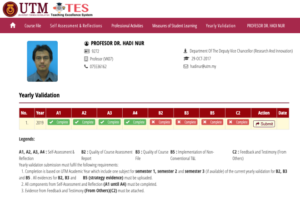There are no specific rules to write your teaching philosophy. After all, it is YOUR teaching philosophy. It is yours. If you have certain philosophy, ideology or belief, it is technically “none-of-other-people-business” right to judge you. After all, we are different individuals and thus, our beliefs are uniquely our own. This is the common assumption.
But, if our teaching philosophy in TESDCP will be evaluated by some people in our school and faculty, it means that the assessors will use “certain” rubric to evaluate our teaching philosophy. Isn’t it so? So, in that sense there will be different hierarchy or rating for our teaching philosophy, right? What should we do then?
This makes me think about how to write my teaching philosophy. One of the common tips that I find from the internet about writing a teaching philosophy is to write it from heart (and soul). I have written mine few weeks ago after I attended the TES workshop in late June.
But after a while, I start to think about the best example of teaching philosophy and its criteria. It is not that I think too much about how I will be evaluated but rather, I want to see how my current teaching philosophy has the essential elements of a good teaching philosophy because being a non-native speaker of English, I might not be able to write my teaching philosophy proficiently as what I might have originally intended.
I discussed this with my colleague, Dr Narina. She also has similar thoughts on this. So, as we tried to find any guideline on how to write a teaching philosophy from UTM website but to no avail, she came across a guideline given by other universities instead. One of the straight-forward guideline is by Iowa State University. She shares this with me. [Psstt… you can also watch a video from Youtube. HERE is the link]
Basically, Iowa State University Centre of Teaching and Learning states 4 core ideas about teaching philosophy. The 4 core ideas are
- What are your objectives as a teacher?
- How will you achieve those objectives?
- How will you measure your teaching effectiveness?
- Why?
If some of you are still wondering on how to write your teaching philosophy, you can use the 4 core ideas as a guideline of your writing. I know some of you might say that we are UTM academicians, not Iowa State University, but I think as a start, we can use the 4 core ideas just to guide our thoughts. At least, we have “substance” in our writing. Better yet, we can sub-divide our teaching philosophy into 4 divisions: objectives, ways to achieve those objective, measure of teaching effectiveness and personal reasons of choosing the career as an academician i.e. teaching line of profession. 😀
So, all the best in preparing our TESDCP! We have few more days before the deadline (15 August 2019 is the deadline for submission)
Disclaimer: This is what my friend shares with me that I want to share with others. I hope that it would benefit some of us in writing our teaching philosophy.


